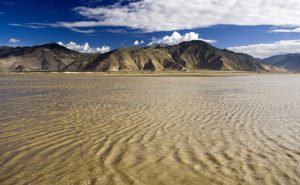Offshore oil spills are a frequent hazard to marine and coastal ecosystems and a costly one to clean-up.
The Gulf of Mexico oil spill in 2010 — the worst environmental disaster in U.S. history — looks likely to cost BP $40 billion in clean-up and compensation claims.
Unsurprisingly, there has been growing interest since 2010 from oil companies and government departments in funding new techniques for reducing the environmental impact and cost of future oil spills.
Until now the two main methods have been using chemical dispersants, which break up the oil, and skimming, a technique whereby the oil is pulled off the surface of the water.
However, there are drawbacks to both. Chemical dispersants can have negative impacts on marine life and skimming can be hampered by bad weather.
Researchers from the Massachusetts Institute of Technology (MIT) say they have found a method of recovering oil after a spill using magnetics. What’s more, unlike other methods, their technique will enable to the recovered oil to be re-used.
How the magnetics work
On it’s own, oil is not magnetic, but MIT researches say that when mixed with water-repellent, ferrous nanoparticles the oil can be magnetically separated from the water. The nanoparticles can later be removed to enable the re-use of the oil.
The recovery process would be conducted out at sea after the oil spill, explains co-researcher Professor Markus Zahn. Seawater polluted with oil would be pumped onto a boat treatment facility. Once onboard, the magnetic nanoparticles would be added and attach themselves to the oil.
The liquid would then be filtered with the magnets to separate the oil and water, with the water returned to the sea and the oil carried back to shore to an oil refinery.
However, Zahn faces a battle to gain acceptance for his magnetic technique, admitting that the oil giant BP has already turned down the opportunity of funding the research. There are also concerns from environmental groups about the accidental release of nanoparticles into the marine environment.
Skimming still better for clean-up
Dr Susan Shaw, founder of the Marine Environmental Research Institute, says skimming remains the preferred option of many environmental groups for cleaning up oil spills.
"I think ultimately, it may be a better way of recovering oil once it is brought ashore rather than out at sea," she says. "On a small-scale it may be an excellent system but I don’t think it will work at sea in such a challenging environment."
For Shaw, a newly developed skimmer from a US-based company Team Elastic offers a better method for cleaning up oil spills.
It can recover about 4,700 gallons per minute, so assuming the skimmer could be deployed 24 hours a day, it would take 30 days to pick up the entire 200 million gallons of oil spilled during the Gulf of Mexico disaster.
"In my opinion, the new skimmers are the most hopeful and best method for cleaning up an oil spill and protecting health and the environment. These skimmers should be part of the safety equipment required by permit for every offshore drilling rig.
"This will likely be opposed by an industry that does not want to quantify the amount of oil released to the environment because they are fined per gallon released," says Shaw.

